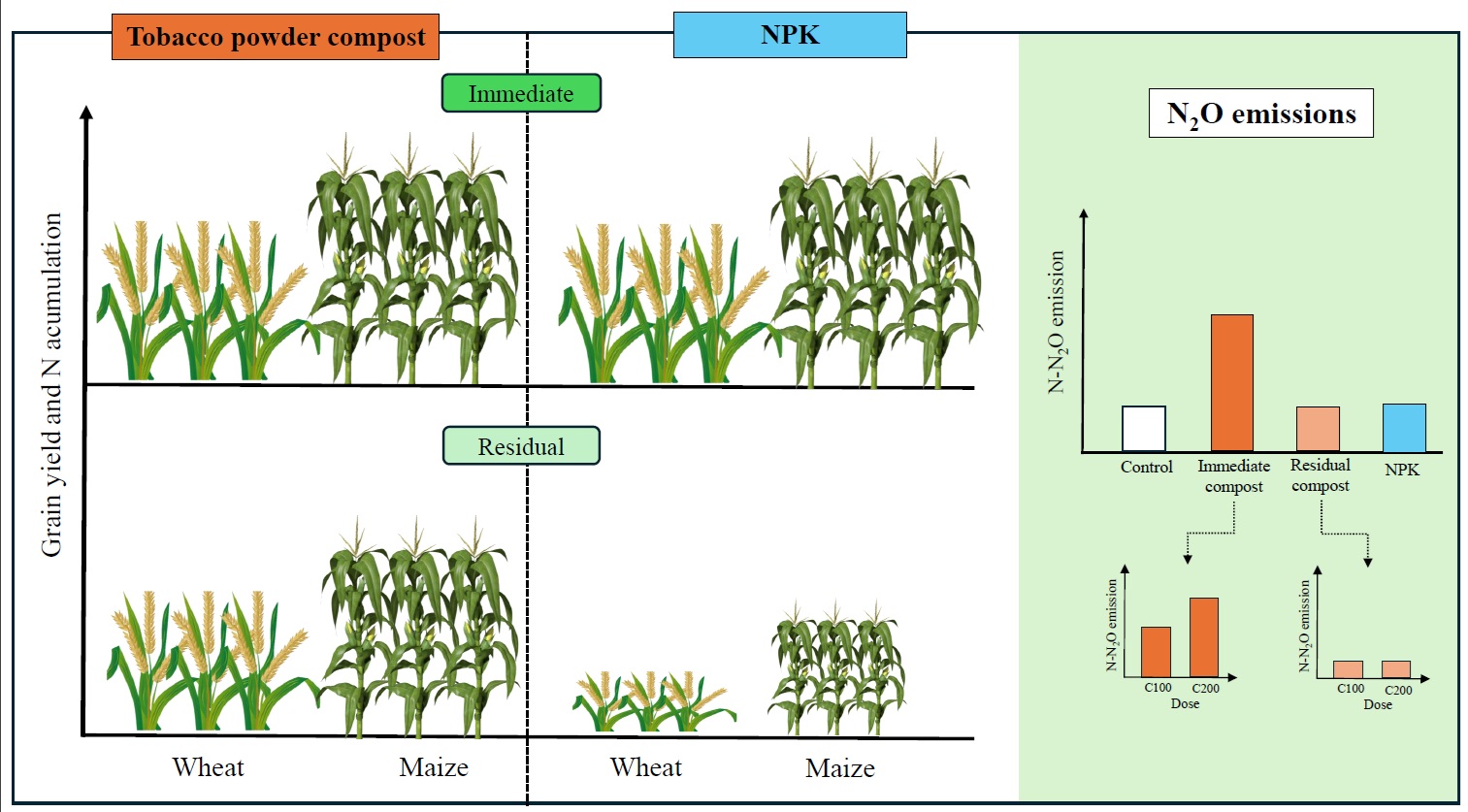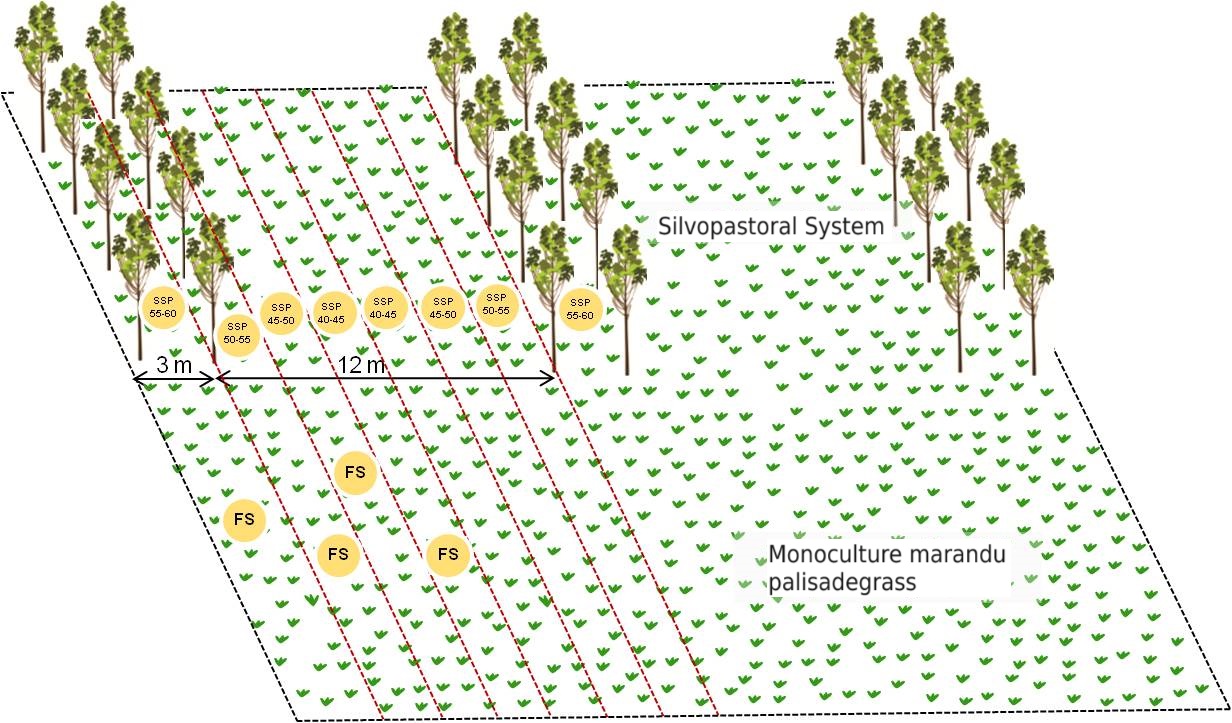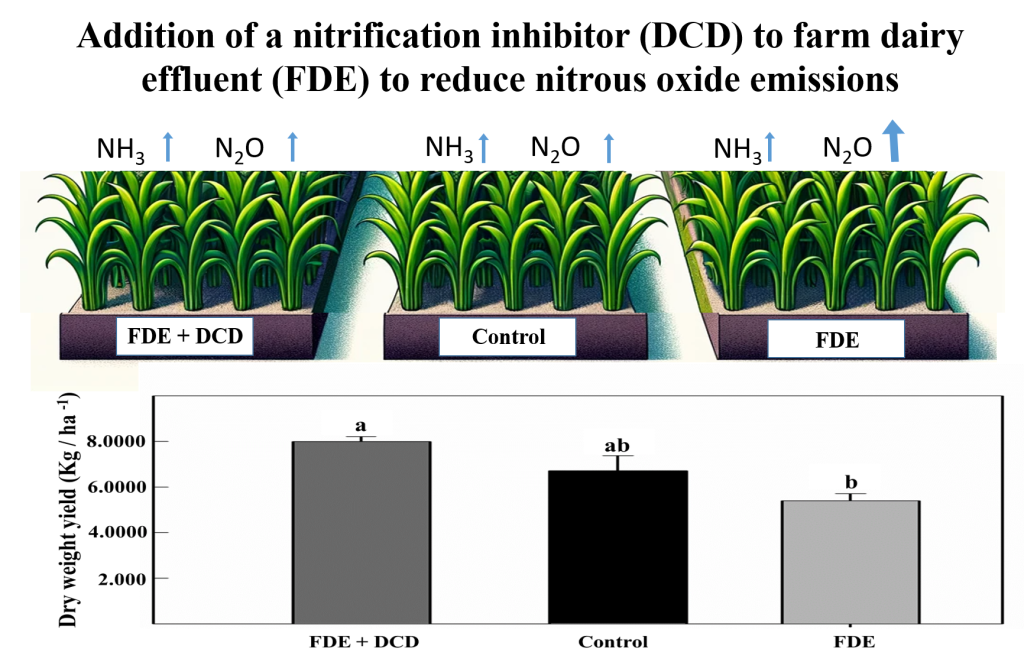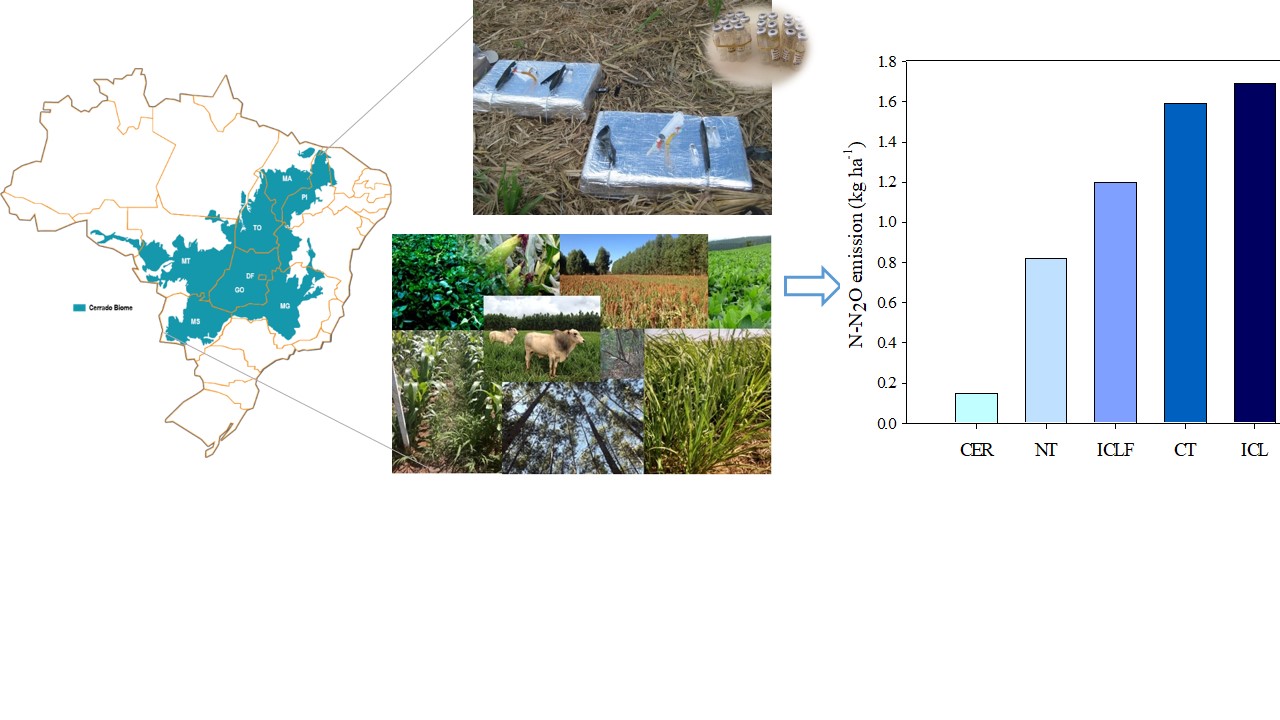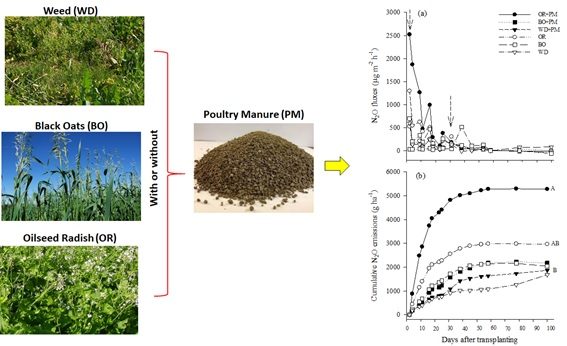Immediate and residual effect of tobacco powder compost and of NPK on N2O emissions and on N use in a wheat/corn crop succession
04/Feb/2025
ABSTRACT Organic fertilization with tobacco powder compost produced via solid-state fermentation (SSF) is a recent practice that needs to be evaluated through research. This study aimed to evaluate the effect of two nitrogen sources – tobacco powder compost or mineral fertilizer (NPK) – and of compost doses on N use and loss in an immediate and residual way in a wheat/corn crop succession in a subtropical Argissolo. The wheat/corn crop succession was established after three successive fertilizer applications with different […]
Management of marandu grass pasture increases soil carbon and nitrogen stocks in silvopastoral systems in the Brazilian Cerrado
12/Dec/2024
ABSTRACT Integration of systems with pastures, using silvopastoral systems, can increase soil carbon levels, optimize land use, improve the quality and productivity of agricultural products, and promote the conservation of environmental resources. This study aimed to evaluate the influence of management practices of marandu grass at eucalyptus shading levels in a silvopastoral systems, on organic carbon and nitrogen stocks, and soil chemical properties in the Brazilian Cerrado. Environments with different light availability in the plots (SPS 55-60, SPS 50-55, SPS […]
Nitrification inhibitor addition to farm dairy effluent to reduce nitrous oxide emissions
11/Mar/2024
ABSTRACT Increasing the use of nitrogen (N) fertilizers will be necessary to enhance grain and pasture yields to satisfy the growing world demand for food. Organic amendments, such as farm dairy effluents (FDE), are an alternative to traditional synthetic fertilizers. However, part of the applied N could be lost as ammonia (NH3) volatilization or nitrous oxide (N2O) emission, decreasing N availability to plants. Nitrification inhibitors, such as dicyandiamide (DCD), suppress the microbial process of nitrification, decreasing soil nitrate concentration and, […]
N2O emissions from soils under different uses in the Brazilian Cerrado – A review
24/Nov/2021
ABSTRACT: The Cerrado (Brazilian savannah) is a biome of great socio-economic and environmental importance to Brazil. The rapid agricultural expansion in the Cerrado biome areas promoted biogeochemical cycles that affect nitrogen and carbon dynamics, leading to increased greenhouse gas (GHG) emissions. In Brazil, nitrous oxide (N2O) is the main gas in agriculture, and agricultural practices increase emissions into the atmosphere. This review aimed to assess the influence of agriculture on N2O emissions in the Cerrado region, based on existing data […]
Nitrous Oxide Emissions in No-Tillage Onion ( Allium cepa L.) Crops Are Increased by Oilseed Radish Cover Crop and Poultry Manure Application
10/Apr/2019
ABSTRATO O uso de plantas de cobertura e de esterco de galinha (PM) é uma alternativa para reduzir o uso de insumos sintéticos e pode contribuir para o ciclo de nutrientes em cebolas ( Allium cepa L.) cultivadas em sistema plantio direto. No entanto, esta prática de gestão pode contribuir para um aumento das emissões de N 2 O para a atmosfera. Os objetivos deste estudo foram avaliar o efeito imediato sobre as emissões de N 2 O da adição […]
Soil CH4 and N2O Emissions from Rice Paddy Fields in Southern Brazil as Affected by Crop Management Levels: a Three-Year Field Study
20/Apr/2018
ABSTRACT Rice yield increases in response to improvements in crop management, but the impact on greenhouse gas (GHG) emissions in the subtropical region of Southern Brazil remains unknown. A three-year field study was developed aiming to evaluate the impact that an increase in crop management levels (high and very high) has on soil methane (CH4) and nitrous oxide (N2O) emissions, as compared to the level (medium) currently adopted by farmers in Southern Brazil. Differences in crop management included seed and […]
BIOCHAR: PYROGENIC CARBON FOR AGRICULTURAL USE – A CRITICAL REVIEW
01/Mar/2015
Biochar (carbonized biomass for agricultural use) has been used worldwide as soil amendment and is a technology of particular interest for Brazil, since its “inspiration” is from the historical Terra Preta de Índios (Amazon Dark Earth), and also because Brazil is the world’s largest charcoal producer, generating enormous residue quantities in form of fine charcoal and due to the availability of different residual biomasses, mainly from agroindustry (e.g., sugar-cane bagasse; wood and paper-mill wastes; residues from biofuel industries; sewage sludge […]
Long-term C-CO2 emissions and carbon crop residue mineralization in an oxisol under different tillage and crop rotation systems
01/Jun/2011
Soil C-CO2 emissions are sensitive indicators of management system impacts on soil organic matter (SOM). The main soil C-CO2 sources at the soil-plant interface are the decomposition of crop residues, SOM turnover, and respiration of roots and soil biota. The objectives of this study were to evaluate the impacts of tillage and cropping systems on long-term soil C-CO2 emissions and their relationship with carbon (C) mineralization of crop residues. A long-term experiment was conducted in a Red Oxisol in Cruz […]
Mitigation of methane and nitrous oxide emissions from flood-irrigated rice by no incorporation of winter crop residues into the soil
01/Apr/2011
Winter cover crops are sources of C and N in flooded rice production systems, but very little is known about the effect of crop residue management and quality on soil methane (CH4) and nitrous oxide (N2O) emissions. This study was conducted in pots in a greenhouse to evaluate the influence of crop residue management (incorporated into the soil or left on the soil surface) and the type of cover-crop residues (ryegrass and serradella) on CH4 and N2O emissions from a […]
Dynamics of methane emission from flodded rice soils in southern Brazil
01/Apr/2011
Paddy soils under flooded rice produce nearly 18% of all methane (CH4) emissions in the state of Rio Grande do Sul. However, CH4 release depends on the intensity of soil reduction. The objective of this study was to evaluate the dynamics of emissions of this greenhouse gas from six representative soils [Albaqualf (2), Endoaqualf (2), Udorthent and Hapludoll] of rice cultivation in southern Brazil, to identify the relation with soil proprieties and electrochemical changes in the soil solution after flooding. […]

